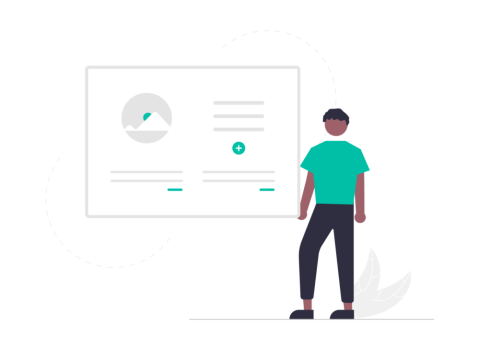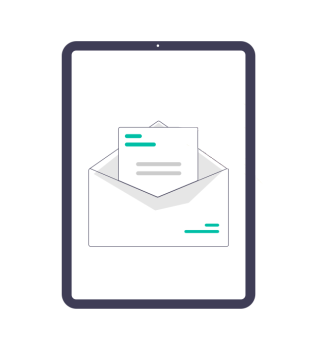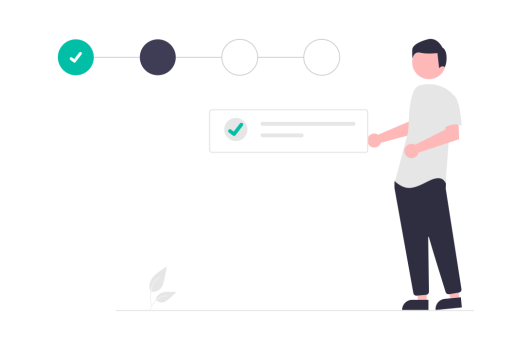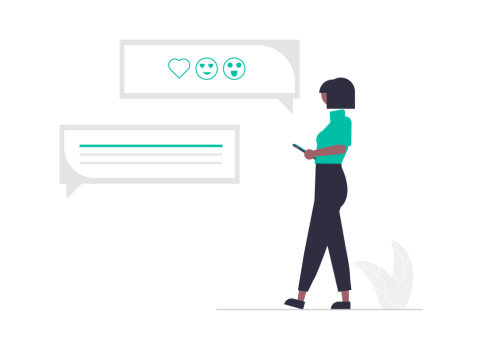Organizing an awards program can be a lot of work, many tasks to manage simultaneously, and several stakeholders to communicate with; we feel you! However, if you aim to increase the quantity and quality of applications received, you will need to add some more tasks to the list! Below are the most common mistakes program organizers do that directly affect the number of applications:
First, getting caught up with planning your awards program, that the marketing part becomes a secondary task.
Second, starting your marketing campaigns only after the program is live and applications are open.
Third, waiting till the deadline to track applications and assess if you are close to the target.
Finally, prioritizing other administrative tasks over creating an outstanding applicant experience.
If you care about your program growth, you need to have the right mindset to increase applicants conversion and decrease incomplete applications. How? There are two sides to the program growth coin we are going to cover below:
- Marketing your program.
- Creating a smooth applications process.
Let's get started!
1. Communicate The Benefits
Before attempting to fill the application form, applicants will be looking for motivation, so you need to give them a good reason to apply. Your program landing page should answer most of their questions, but most importantly, the one question that drives conversion: What’s in it for me?
The answer doesn’t always have to be the cash prize, although it is one crucial reason. But also, you need to highlight the purpose of the award and how their participation would be an added value to the problem. It would also help if you mention how non-winners would be recognized or what the program would add to them; it could be as simple as an exceptional learning experience, mentorship, networking, etc.

When you answer these questions clearly and early enough before they lose interest, you push the right candidates to apply for your program.
2. Informative Program Website
The website doesn't have to be a huge one with several pages and a fancy design. Just an informative landing page for the application form should keep the applicant informed and do the job. To keep it simple, you can just start with a landing page that includes the “Apply” button, along with key information and appealing visuals.
A program landing page can include the below content blocks:
- Concept.
- Call to action.
- Prizes.
- Program timeline.
- Eligibility criteria.
- Judging criteria.
- Benefits.
Read more about the essential building blocks of a program landing page guide that goes through each component in detail.

Remember to make the landing page visually appealing and use your program's branding to make it stick. Just use the right colors with suitable visuals to create a simple and neat design.
Untap provides a template that can be fully customized to your branding, containing content blocks that can work for any awards program. Learn more about our super easy and highly customizable website builder to help you build an amazing program website in no time.
3. Clear Communication Messages
Create a communication document that includes the main messages and call to action you need to convey in your program announcement. Define the tone of voice that should attract the right audience and reflect your brand persona.
Make sure to cover all points in the below checklist:
- Unify the messages you communicate across all platforms. Make it include the prize, the target, and what solution or proposal you are looking for. Don’t forget to communicate the deadline consistently and include a link to the application page.
- Communicate the elements included on the website on social media and via email. For example, make a post on the application process, one for the eligibility, another one for the judges with their profiles, etc.
- Include a blog on your website to communicate news and updates. Publish posts answering some of the questions you get frequently asked on social media, website chat, or info email.
- Communicate the application process from A to Z using an infographic. Highlight important milestones.
- Communicate the deadline consistently, include a count down on your social media channels and on the program website.
4. Automated Notifications
Set automated messages for communicating with applicants. For example, deadline reminders, confirmation messages upon registering, and reminders to start/finish the application form.
Your submission management software should allow you to filter participants who created an account but haven’t applied and ones who started their applications but haven’t finished. Communicate with both groups and send reminders to ensure you don’t lose any of them.

5. Social Media
It is no news that social media has become a key part of our everyday life. There were nearly 3.6 billion users on Social Media in 2020, out of the 7.7 billion world population.
Make good use of your own social media accounts to spread the word about your program. Create informative and shareable posts, and ask your partners and sponsors to share them.
Post types could be:
- Updates and news.
- Deadline reminders and countdown.
- Judges profiles.
- Testimonials from winners in previous editions.
- Posts about the prize and benefits.
- Program tracks.
- Important milestones.
- Eligibility criteria.
6. Targeted Ads
Owned media is a great tool to spread the word among your existing circles and their communities. But if you need to reach out to other potential circles, you have to use targeted paid ads.
When doing targeted ads on social media, you need to pick the channels wisely. Facebook is great if you are reaching out to students; the same goes for Twitter. However, it is better to use LinkedIn and target by job title or interest if you are targeting professionals.
You can use existing lists of participants from previous editions to create lookalike audience campaigns on Facebook or LinkedIn. This kind of campaigns will help you match similar profiles to your previous participants.

7. Target Online Communities
You can also reach more audiences beyond your existing followers organically. There are lots of online communities for almost everything. You can find Facebook groups, pages, and LinkedIn communities concerning all fields of interest.
Make sure to do your research and make a list of those pages or communities. You can post your announcements directly to their wall, but in some cases, you will have to send the admins so they can pre-approve them or publish them themselves.
8. Partnerships
Marketing partners are often overlooked when thinking about outreach. However, they work wonders when it comes to reaching relevant audiences.
If you are targeting students, you should partner with universities or have some student activities on board. What if you are targeting professionals in a niche industry, for example, a certain specialization in engineering? You should think of partnering with syndicates! If you are targeting developers and software engineers, you need to think of developers platforms (Also, forums and online communities). Finally, if you are targeting startups, think of partnering with accelerators.
9. Application Form Experience
The application form is the hero of the participant experience. If you create an engaging and straightforward application form, the completion rate is going to change drastically.
Here below are some tips for a successful application form that converts.
- Include a progress bar. Participants like to understand how much they accomplished and the amount of work left. Also, the sense of accomplishment helps them to keep going.
- Divide the application form into pages. For example, the basic information, their proposal, the team...etc. Pages help applicants focus on each section separately.
- Add visuals. Try to use icons, or include images to make the application form look more fun and less texty. Long application forms with too much text and no visual aids can be really boring.

- Autosave applications! Since some application forms are not made to be done in one sitting. Applicants should have the option to leave and come back later to edit their applications. With autosave, you make sure that their data is saved while they type.
- Use conditional logic questions. Condition logic means that some questions depend on the applicant’s response to previous ones. It controls which fields appear based on the applicant's answer. Avoid confusion with questions that include a note (Answer only if your reply to the previous question was X).
10. Chat Support
Besides including an FAQs section on your website, you need to consider having live chat support. Sometimes neither the FAQs nor the info email is not enough.
Chat support is timely and provides personalized solutions for technical questions.

11. Multiple Phase Submission Process
Instead of having to fill out one long application form, an applicant is less intimidated and more encouraged to submit an application that is on point and relevant to the stage they are at.
A multi-phase submission breaks down the application process into phases, only qualified applicants are moved to subsequent rounds. This helps create a focus for participants and makes entry to your program much easier.
12. Dedicated Applicant Account
One of the form builders disadvantages is that everything disappears after submitting. Even with a confirmation note or email, the applicant feels lost. Everything becomes invisible for an applicant and they have to wait for any message or email.
Applicants deserve to get their own accounts. Which should allow them to get back to their application at any time, view the status of their application, and sometimes view feedback from the program organizer.
With Untap, applicants get to have their own dashboard with status updates. You can also choose to show feedback from judges on their application form or request more information, which appears directly on their account.

In conclusion, to reach the right target audience and make them convert, your mission is to imagine their journey, with all its. Only then will you be able to identify the gaps that need to be addressed.
Book your demo to learn more about how Untap can help you make your award program a success.
